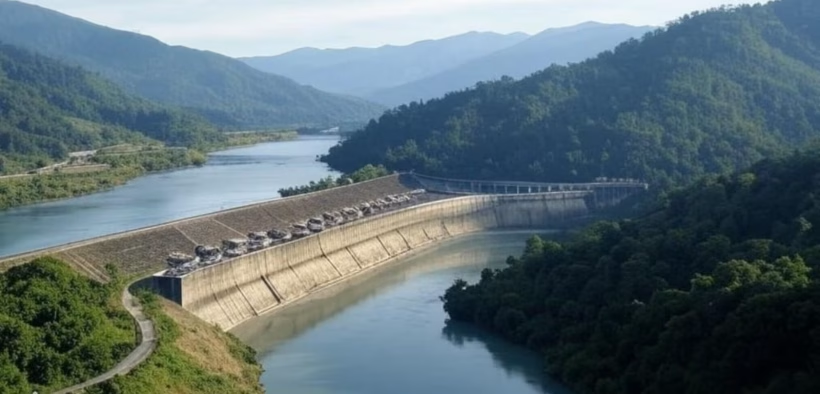India has initiated the largest-ever hydroelectric project planned for Jammu & Kashmir—the Sawalkote Project—with a capacity of 1,856 MW on the Chenab River. After decades of delays since its initial conception in the 1960s, the project has now entered the tendering phase. International bids were invited by NHPC in late July 2025, and the deadline for online submissions is September 10.
Advertisements

The timing is significant—this move came after India suspended key provisions of the Indus Waters Treaty in April 2025, citing security concerns following a terror attack in Kashmir. The suspension removes the requirement for Pakistan’s consent on utilising water from western rivers, enabling India to proceed without external objections.
Designed as a run‑of‑river project, Sawalkote features a 192.5-metre roller‑compacted concrete dam, three long diversion tunnels, and an underground powerhouse with eight 225 MW units, plus a 56 MW environmental flow unit. Although formally estimated at ₹22,704 crore, the Government estimates construction will take about 113 months from start to completion.
Sawalkote is part of a broader strategy in the Chenab basin. India is also fast‑tracking other major dams including Pakal Dul (1,000 MW), Kiru (624 MW), Ratle (850 MW), among others. Together, they could generate over 5,000 MW of clean power by 2028–2029.
In response to rising tensions, Pakistan has warned India that any curtailment of water could harm its agriculture and energy sectors. India, however, maintains it is asserting its legitimate rights to develop hydroelectric resources in J&K under the changed geopolitical landscape.

